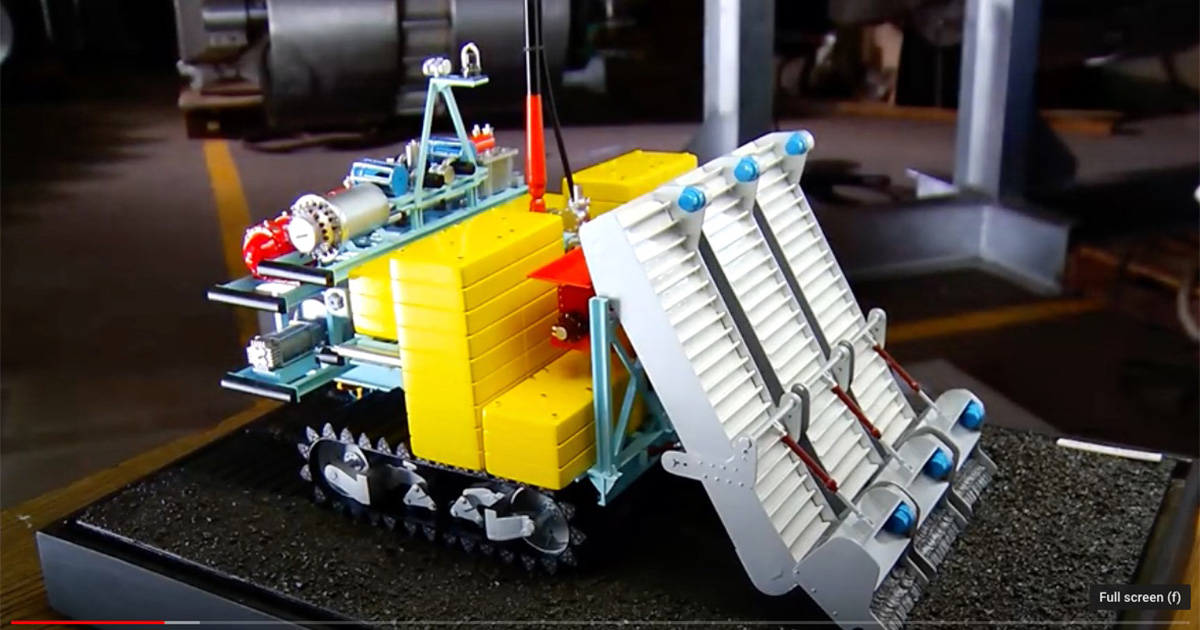NIOT’s Varaha-1

Scientists at the National Institute of Ocean Technology (NIOT) designed and developed Varaha-1, a self-propelled seabed mining machine for the collection of polymetallic nodules.
NIOT’s mining system is designed to pick up nodules from the seafloor, crush them in-situ to smaller pieces, and then pump the slurry of crushed nodules and seawater through a flexible hose, first to an intermediate pump station, suspended in the water column, close to the seabed miner. From this intermediate pump station, the slurry would be transferred vertically to the ship through a riser system of flexible hoses.
By early 2023, NIOT plans to conduct trials to demonstrate Varaha-1 capabilities in collecting, crushing, and transporting these nodules to an intermediate pump station. This project is a pilot demonstration of nodule collection and vertical transfer. Scientists at NIOT plan to successfully demonstrate nodule collection from the seabed floor to the surface ship by 2025-2026.
In increase in electric vehicles (EVs) is expected over the next two decades which would require a significant increase of raw materials like nickel, copper, and cobalt—key components in the batteries of EVs— which are not adequate available on land. This explains the need for alternate supply sources. Developing technology for deep-sea mining is an important project under the Indian Government Deep Ocean Mission.

